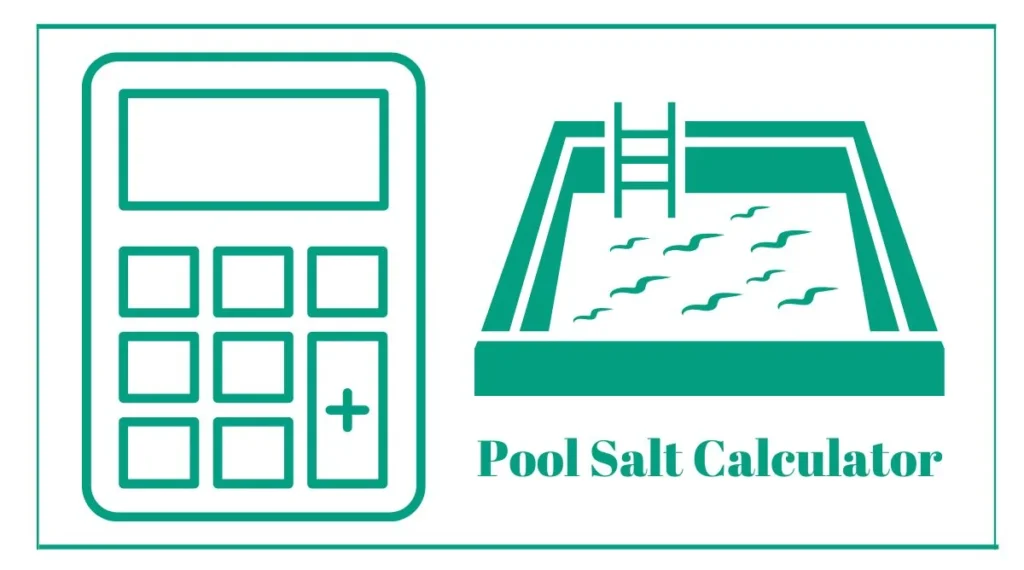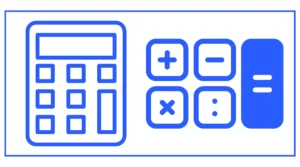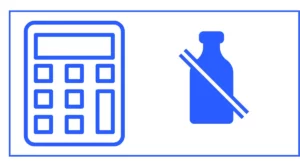Pool Salt Calculator: Adjust the pool salinity
Are you looking for an easy way to determine how much salt you need to add to your pool?
This pool salt calculator helps you calculate the amount of salt to add to your pool.
Enter your pool volume in liters, current salt concentration, and desired salt concentration.
The result will be shown in kg.

How much salt do I need for my pool?
The answer depends on your pool volume, the current salt level of your pool, and the desired salt level of your pool. Usually, the salt concentration in a swimming pool is between 2700 and 3400 ppm. However, the ideal salt concentration in the swimming pool is 3200 ppm.
In case you are wondering what ppm is,. PPM stands for parts per million. It is the amount of a substance (salt in this case) measured in milligrams that is present in one liter of the solution (water in this case).
How can I use the pool salinity calculator?
To use the pool salt calculator, simply enter the pool volume in liters, the current salt concentration, and the desired salt concentration. Make sure that the current and desired salt concentrations are in ppm. You will get the answer in kilograms.
How do I find the swimming pool volume?
The easiest way to find out the pool volume is to check your pool invoice or ask the company/person who installed the pool. You also need to find out whether you have a round or rectangular pool. However, if you do not have the invoice or it is impossible to contact the installer, here is a simple formula to calculate the rectangular pool volume.
Measure the length, width, and depth in meters. Multiply all three values. You will get the answer in cubic meters. Since 1 cubic meter is equal to 1000 meters, multiply your answer by 1000.
How do find the current salinity level of my pool water?
You can use a pool salt tester (also known as a pool salt meter, conductivity sensor, or salt sensor). It will show you the current chlorine salt level in ppm. If it is in grams per liter (g/L), you can use the below formula to convert it into parts per million.
1 g/L = 1001.142303 parts per million (ppm)
1 part/million (ppm) = 0.000998859 g/L
Why is it important to maintain a proper salt level in the pool water?
Maintaining the salt level of a swimming pool is crucial because the chlorine generator uses this salt to produce chlorine. The chlorine helps keep the pool clean and safe for swimmers by killing the germs.
When you add chlorine to the water, it forms hypochlorous acid. The hypochlorous acid kills the bacteria (like E. coli) and germs to keep your pool free from viruses that cause swimmer’s ear and diarrhea.
What happens if the salinity level is too low?
The salt chlorine generator won’t produce enough chlorine if the salinity level is too low. Hence, your pool will have low chlorine which means good conditions for bacteria and algae to grow. Moreover, you will also face pool care problems.
Why too much salt is bad for your pool?
Usually, high salt levels up to 6000 ppm are not a problem. Of course, the water will be too salty for the swimmers. You risk experiencing corrosion-related damage to metallic equipment if the ppm level is over 6000. That is why it is important to use a good salinity calculator to figure out how much salt you need to add depending on your pool size.
What is the ideal quantity of salt for a 30,000-liter pool (7925 US gallons)?
If the current salt level of the 30,000 litre pool is 0, the recommended salt is 96 kg (211.644).
How much salt do I need for 50,000 liter pool (13208 us gallons)?
If the current salt level of the 50,000 litre pool is 0, you should add 160 kg (352.74 pounds) of salt to your pool.
How can I dilute my saltwater pool?
While adding salt to your pool, it is important to remember that salt does not evaporate or degrade over time. The only way to dilute the saltwater pool is by adding some fresh gallons of water.
How can I add salt to my salt water swimming pool?
First of all, you should know how much salt you need to add to your pool. You can use the above pool salinity calculator to determine how much salt is needed. For this purpose you need to calculate the pool volume and figure out the current amount of salt your pool holds.
Once your calculate how much salt is needed, turn off the salt chlorinator and find out the most shallow pool parts. Pour the salt. During pouring, you can keep the pump on so that water circulates. You can use the pool brush to dissolve the big piles. Finally, wait for 24 hours before measuring the pool salt levels again.
Should I keep the pool pump on when adding salt?
Yes, keeping the pool pump on when adding the salt helps dissolve the salt in water quickly.
What is the pool salt formula for?
The pool salt formula is NaCl, sodium chloride.
What is the ideal setting for salt chlorinator?
The ideal setting for the salt chlorinator is 3200 ppm.
Is a salt water pool chlorine-free?
No, the saltwater pools are not chlorine-free. However, chlorine is not added directly to these pools. Instead, the chlorine is made from the salt that is added to the pool. Hence, it contains very little chlorine just to keep the water fresh and germs-free.
What is the recommended frequency for adding salt to my pool?
Since the salt is dissolved in the water, it is not evaporated separately. You should not add salt when you add fresh water or when there is heavy rainfall that results in water being diluted.
How much salt do I add to my pool after rain?
Rain can quickly dilute the salt cells and result in low salt levels in your pool. You should check the salinity level and add the salt accordingly to avoid any damage to your pool or pool equipment. Usually, it is recommended to add 1 bag for every inch of rain.
You might want an easy common calculator to determine how much money you need for lawn mowing or removing trees.





